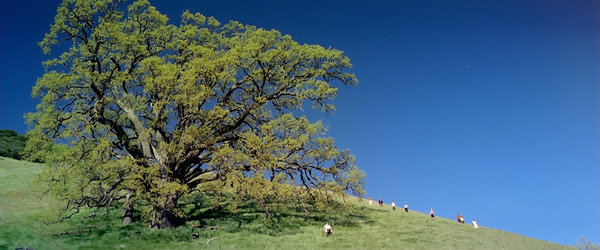Chronicles of a Disappearance
dal 18/1/2012 al 12/5/2012
Segnalato da
DHC/ART Foundation for Contemporary Art
18/1/2012
Chronicles of a Disappearance
DHC/ART Foundation for Contemporary Art, Montreal
The exhibition explores different notions of disappearance articulated across the political, social and personal realms, bringing together major works by five acclaimed international artists: Omer Fast,Teresa Margolles, Philippe Parreno, Taryn Simon, Jose' Toirac.

Curated by John Zeppetelli
Omer Fast
Teresa Margolles
Philippe Parreno
Taryn Simon
José Toirac
DHC/ART Foundation is delighted to present a thematic group show titled Chronicles of a Disappearance, bringing together major works by five acclaimed international artists. The exhibition explores different notions of disappearance articulated across the political, social and personal realms. All the works stage and conceptualize mortality, absence or loss, offering rich associative histories while also uncovering the hidden and inaccessible—or that which is made to disappear from view.
Omer Fast's 5000 Feet is the Best (2011), is a film based on interviews with an American Predator drone aerial vehicle operator who describes incidents where militants and civilians are fired at in Pakistan and Afghanistan—resulting in deep psychological scarring. The film is a brilliant blend of fact and fiction as it visualizes certain technical aspects of the job, while also offering fascinating narrative digressions. Using an almost circular structure, the work always returns to the central core of the interviews with both a real and a fictional pilot. Alarmingly like video games, the pilot may be based in Las Vegas but directs lethal drones halfway across the world. Such are the dislocations of modern warfare.
Teresa Margolles's Plancha (2010) is at first view a seemingly innocent minimalist sculpture, but it packs an intense emotional punch by its provocative use of bodily substances and its evocation of traumatic events. Water drips from above, hitting heated steel plates reminiscent of an operating table, and evaporating instantly in the exhibition space. Sourced from a morgue in Mexico City where the artist has worked, this is water used to cleanse corpses after autopsy. With just a few concrete elements, Margolles vividly enacts the transformations of the human body after death, especially the final passage from presence to absence.
Shot in 70mm and digitally projected on a massive screen, June 8, 1968 (2009), Philippe Parreno's haunting and sumptuous seven-minute film, imaginatively re-enacts the train journey from New York to Washington carrying assassinated Senator Robert Kennedy's coffin on that very date. The film is literally a series of tracking shots from the point of view of the train and the dead body within it. The enormous projection creates an equivalence in scale and a community between the audience looking at the on-screen mourners lining the tracks in silent witness, who in turn look back at the audience.
Taryn Simon's documentary photographic inventory on what we can't or won't allow ourselves to see in the realms of science, government, security and nature—An American Index of the Hidden and Unfamiliar (2007), reveals that which is foundational to America's functioning and mythology. The formally composed and well lit photographs of normally unobtainable objects or inaccessible places are paired with precise and contextualizing texts. Her work ultimately exposes—in powerful and disturbing ways—the undergirding of American society and the divide between public and expert access.
José Toirac's conceptual single-screen work Opus (2005), features an edited speech by controversial leader Fidel Castro—himself increasingly disappearing after retiring in 2008—where everything but the numbers are cut out from the audio track. The impassioned numerical pronouncements, full of rhetorical surges, are an endless litany whose corresponding stark white digits appear on a black screen. The artist reduces Castro's ramblings to unintelligible quantifications of gains, losses or predictions, indeed reducing politics to endless spin and obfuscation.
Public Programs
February 7 at 7 PM / 1379, rue Sherbrooke Ouest, Montréal
Screening of Chronicle of a Disappearance (1996) by critically acclaimed director Elia Suleiman
February 8 at 7 PM / 1379, rue Sherbrooke Ouest, Montréal
Screening of The Time that Remains (2009) followed by a talk by director Elia Suleiman
March (TBC) / 1379, rue Sherbrooke Ouest, Montréal
Artist Talk
April (TBC) / 407, rue St-Pierre, Montréal
Round Table Discussion – Dissections of the exhibition with Christine Ross (McGill University) and Vincent Lavoie (Université de Québec à Montréal).
All events are open to the public and admission is free.
Image: Philippe Parreno, "June 8, 1968" 2009, 70mm film, 7,11 min.
Opening:
DHC/ART Foundation for Contemporary Art
451 & 465 St-Jean (corner Notre-Dame, in Old Montreal) - Montreal
Hours:
Wednesday–Friday, 12pm–7pm
Saturday–Sunday, 11am–6pm
Free admission



